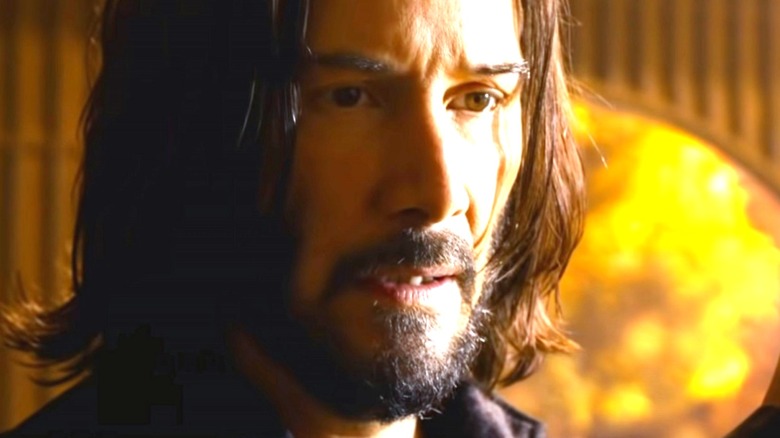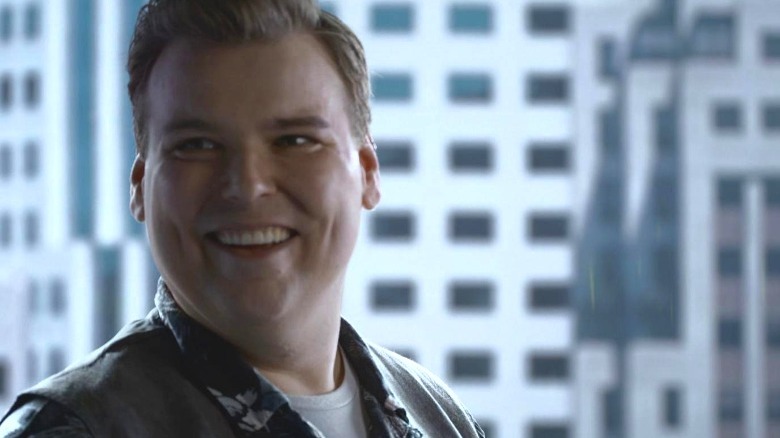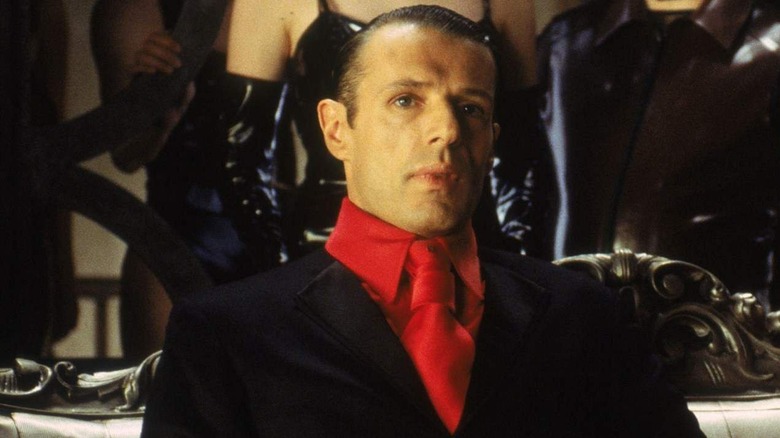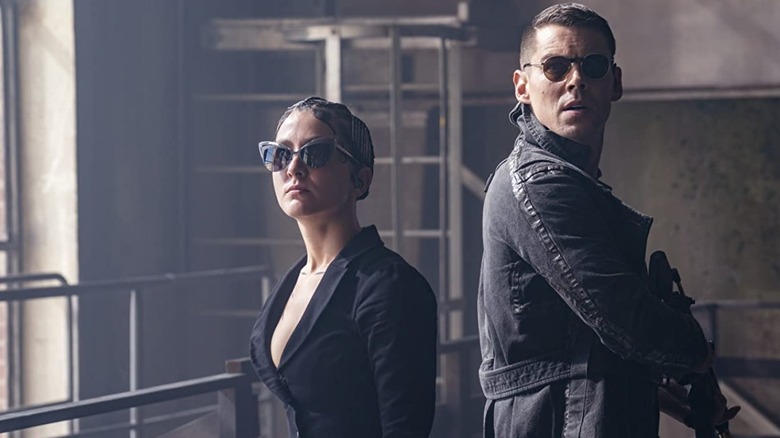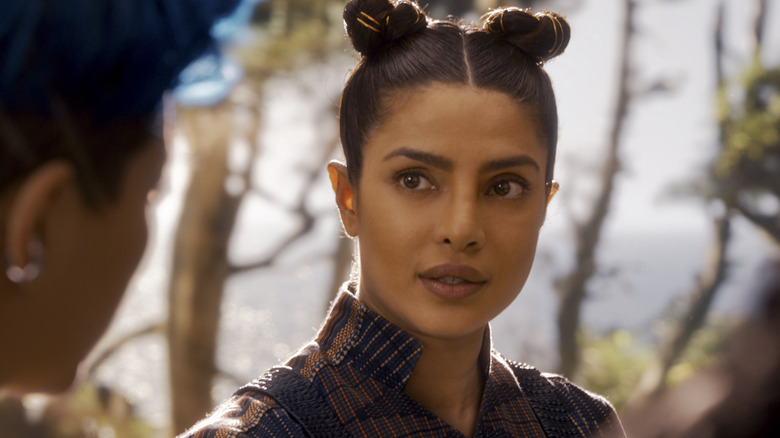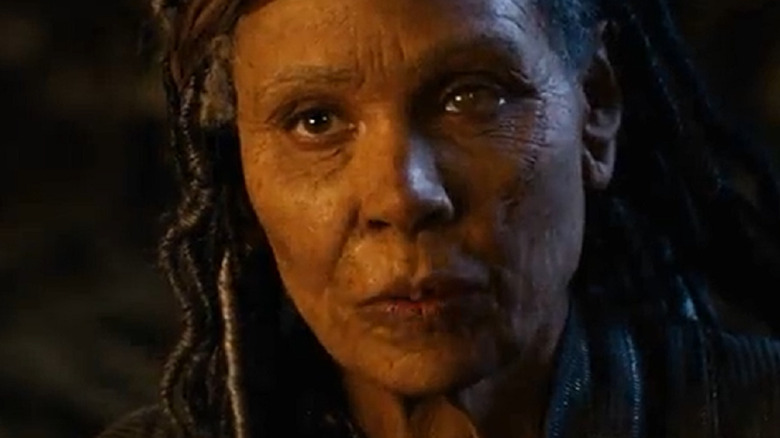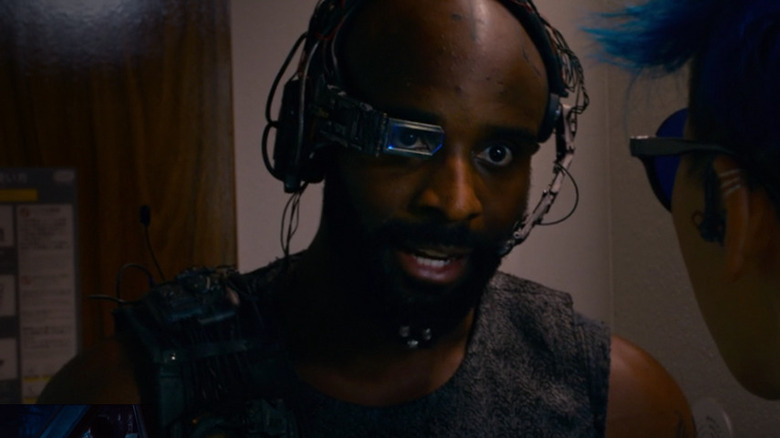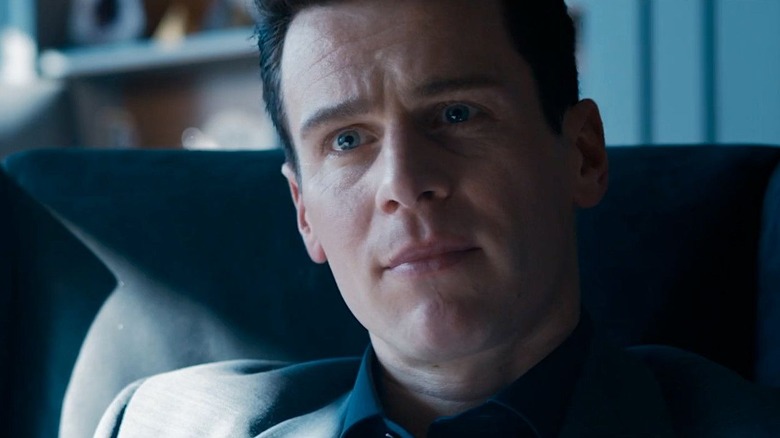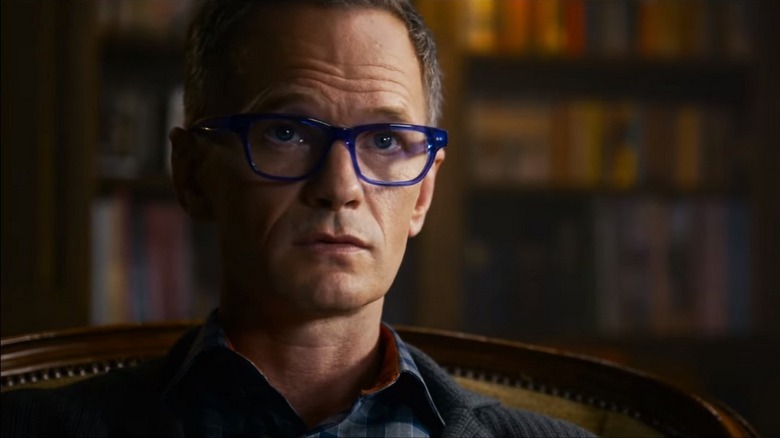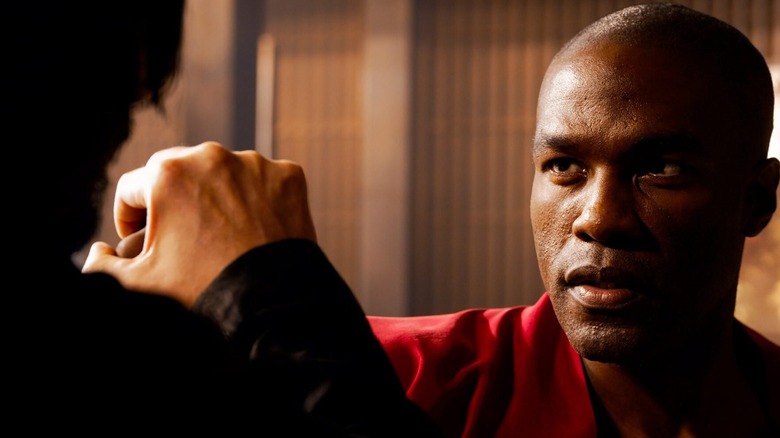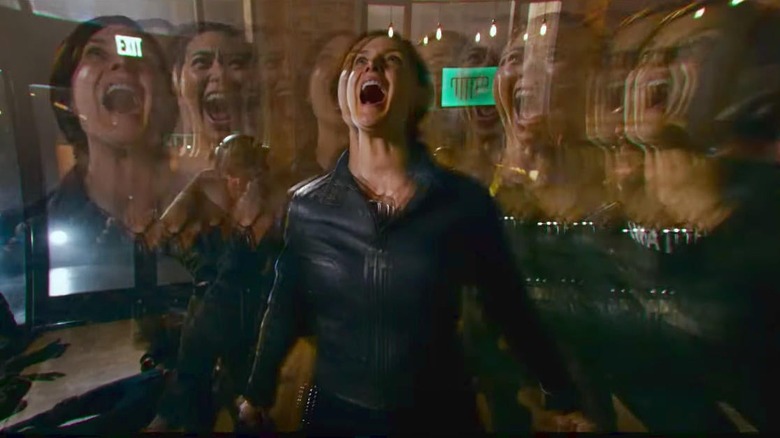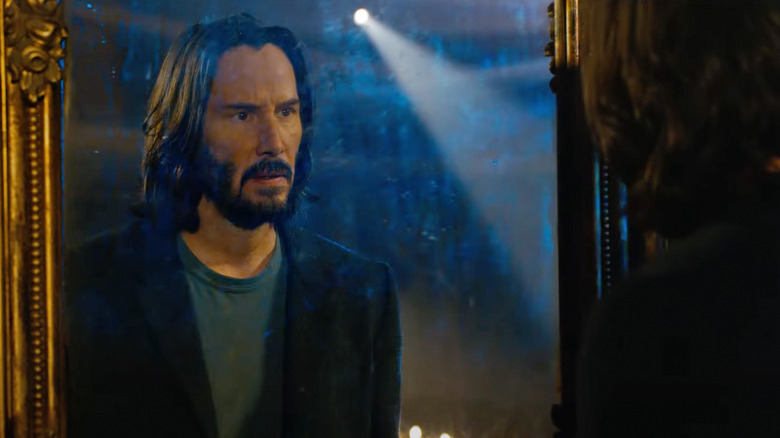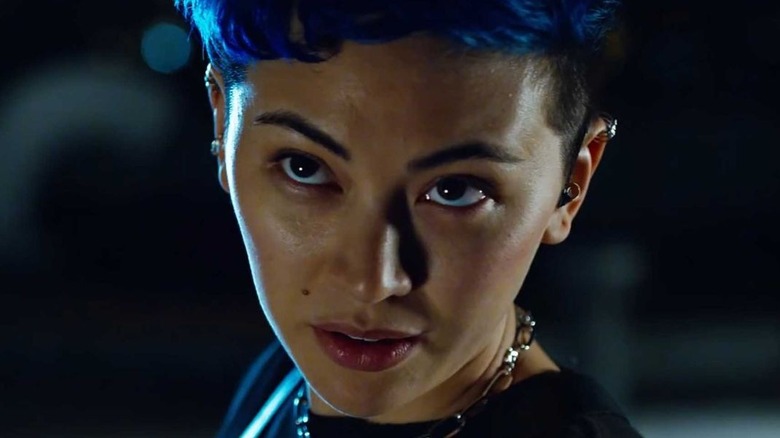The 15 Best Characters In The Matrix Resurrections Ranked
During the first act of "The Matrix Resurrections," a mass of tech industry wannabes debate what "The Matrix" is. One claims that it's "mind porn." Another calls it "crypto fascism." Eventually, the group settles on the movie's most famous visual, the one that eventually became commodified to the point that it lost almost all of its impact: bullet time.
It's a breathlessly cynical scene that ignores some fundamental truths about the franchise, one of which is that "The Matrix" was always about the people who populate it, not the (admittedly incredible) visual effects. The three films that comprise the original Matrix trilogy are rich with memorable characters. Even if Lana Wachowski's return to the Matrix franchise despises the machinery that led to its creation, "The Matrix Resurrections" loves the characters, both old and new, who make it soar. Here are the best characters from "The Matrix Resurrections," ranked.
12. Jude
Jude is the worst by design. He is the creative director of Deus Ex Machina, the video game company that Neo works for. He's also in Warner Brothers' pocket, having left integrity entirely behind. His entire function is to be awful, and to embody everything that is atrocious about soulless assembly-line art. He's less of a character, and more one note played derisively. Does that make him a bad character? Sort of. Does it also make him awesome? Absolutely. Actor Andrew Caldwell utters the words "bullet time" with such simultaneous joy and vinegar that it almost broke me.
In this way, Jude is a testament to the empathy that "The Matrix Resurrections" employs for its entire run time. Wachowski's movie could've left the yes men in the dust. Instead, it lets characters like Jude make a memorable impression. That's the opposite of character development decided by a committee, and a fun, acid-tinged realization of Wachowski's core intentions.
11. The Merovingian and the Exiles
Lana Wachowski must have known that some people would watch "The Matrix Resurrections" never having seen the previous two sequels. "The Matrix Reloaded" and "The Matrix Revolutions" made a splash at the box office (and have recently undergone some degree of critical reappreciation following an initially lackluster reception), but neither had the impact of the original. At this point, characters from "Reloaded" and "Revolutions" qualify as deep cuts, which is why the Merovingian's (Lambert Wilson) appearance in "The Matrix Resurrections" is absolutely delicious.
The Merovingian is an old program whose currency is information. This is important because, when we see the Merovingian and a swathe of Exiles in "Resurrections," they have zero facts to offer. At one point, the Merovingian launches into a tirade about how Neo not only stole his life but doomed his way of living. "We had grace! We had style! We had conversation! Not this beep-beep-beep-beep," he screams, pretending to text on a phone.
The Merovingian still deals in information, but nothing he says matters. If Lana Wachowski is having fun with the youth who cannibalize our culture, she's also using a character from one of her "lesser" movies to satirize those who don't know that their time has come and gone. The meta is strong.
10. Shephard, Lexy, and Burg
Lana Wachowski is a known fan of video games. Video games, as both a concept and a plot device, fuel the "The Matrix Resurrections," from its explorations (and ultimate rejection) of binary oppositions, the basis of all video game code, to the ways that play can free our imaginations. So, it's little surprise that "The Matrix Resurrections" features an extended sequence in which the protagonist spends a lot of time in an elevator with a character named Shepherd. "Mass Effect" hive, rise up.
All kidding aside, Shepherd (Max Riemelt), along with Berg (Brian J Smith) and Lexy (Eréndira Ibarra), are more of a meta nod to the Wachowskis' "Sense8" than fully defined characters. Yes, Berg is a Neo-ologist. Yes, Lexy wisely notes the bonds that tie Neo to Trinity. But none of their quirks resonate as much as the fact that Wachowski brought actors from her last original story to her biggest franchise, giving the trio extra screen time in a bona fide blockbuster. That's a level of wish fulfillment that even video games can't provide.
9. Sati
Sati is a better character on paper than she is in execution. That's not the fault of Priyanka Chopra Jonas, who infuses her lines with as much charm and energy as she can muster. The issue is that Sati is frequently saddled with dialogue that consists almost entirely of exposition that either establishes the stakes of the final act or elucidates decades of past real-world history.
This is a shame, because Sati represents an underemphasized element of the Matrix saga: it's generational. "The Matrix" was released 22 years ago. By this point, it's the kind of film young parents pass on to their children. Sati's father, as it turns out, was the Chief Engineer at the Anomaleum, and he designed the resurrection pods where Neo and Trinity were imprisoned. He passed down knowledge of their survival to Sati. In turn, her decisions are informed by the empathy she developed from being part-Exile, as well as hearing Neo's story in her youth.
This is all fascinating and thematically rich. Unfortunately, it's all revealed in a rushed one-minute monologue. Sorry, Sati.
8. Niobe
As "Midnight Mass" and "Cherry" readily proved, old age makeup remains Hollywood's most elusive special effect, one that frequently gets in the way of good storytelling. While some of 2021's biggest movies used CGI to de-age its stars, "The Matrix Resurrections" went the practical route, using makeup and prosthetics to make the 50-year-old Jada Pinkett-Smith look north of 80. The results not only distract from Niobe's character, they impede Pinkett-Smith's performance.
Niobe is a character whose faith has broken in the face of enduring war, but saddled with makeup that the rest of the older cast members aren't, Pickett-Smith's performance feels like it's from another film, numbing her character's impact. There's no doubt that the actress is grateful to be there and that Wachowski is ready to receive her, but it's a shame the film couldn't find a more concerted use for her talents.
7. Seek (Seqouia)
The many definitions of "operator" include the following, courtesy of Lexico: "a person who works for a phone company assisting users, or who works at a telephone switchboard." That applies to Tank, who was the operator on the original Morpheus' ship, the Nebuchadnezzar. It also applies to Sequoia, also known as Seek, who guides crew members in and out of the Matrix.
However, it's the "assisting users" component that interests me most, because Seek is assistance personified. He saves multiple crew members on more than one occasion. He has an endearing fondness for nature that's antithetical to the entire thrust of the Matrix. He is steadfast, tenacious, and frequently in awe of the world-shaking developments that fuel the movie's plot. Seek shows us who he is even while he's serving others. He's a treasure.
6. Agent Smith
Across four movies, Agent Smith has performed a number of diabolical deeds, but none punched me in the gut the way that Smith — now played with youthful, devilish verve by Jonathan Groff — deliberately calls Neo by his proverbial deadname throughout "The Matrix: Resurrections." And Groff makes every utterance of "Tom" and "Mr. Anderson" count. His attacks are not just bigoted or disdainful, they reek of self-superiority. But "The Matrix Resurrections" transforms Smith from the series' biggest bad into the next stage of mechanical evolution, with the possibility that he — and the world — will change for the better. That's not insidious. It's downright subversive.
Smith, decades after we last saw him, still believes that he's better than everyone else, but he also understands that Neo, not Mr. Anderson, freed him from bondage. The two of them are inexorably linked in their own kind of binary. That's what makes Smith's decision to briefly aid Neo so surprising, perfect, and thrilling. While Smith is happy to spew Neo's old name in his pursuit of power, he's also trying to make his own mean something more. As he says before one of their many fights, "I have such dreams, Tom." He isn't kidding.
5. The Analyst
While I'm still wrestling with the Analyst's arc in "The Matrix Resurrections," I think that's a testament to the power of the character. The Analyst has determined that the equation that will keep humans in stasis involves balancing their emotional life on the knife's edge of desire and fear. Give us a taste of what we want, but never the real thing. He's discovered that, if a person's mind is placated, they will serve as their own jailer, returning to the same old stories again and again, their traumas dismantled and played upon.
Harris' performance reflects this ethos with crystal clarity. He's genuinely fascinated by the experience of being alive. He has, effectively, analyzed the human condition down to the bone and decided that there's not a single spark of hope.
This is why the Analyst is a tremendous villain. In determining what people lack, he reveals what makes them special: hope and love. Even when all else fails, those two elements endure. Most of us wouldn't have gotten through 2021 without them. The Analyst's blindness shines a light that we can follow to improve ourselves. That's tremendous character-building.
4. Morpehus
Many of the characters in "The Matrix Resurrections" come with some pretty clear subtext: reboots suck. The movie practically screams that at us during its first act. What it doesn't talk about quite as loudly, however, is that, in the context of "The Matrix Resurrections," Morpheus is a reboot himself.
That's the hook of the character, who is disguised as a glitch in the Matrix's own recreation of the first movie. Bugs finds him and brings him back to the real world, where he sets about freeing Neo's mind again, going through many of the same motions as his original incarnation. If anyone has the right to be cynical about reboots, it's Morpheus.
Except he isn't. As realized by Yayha Abdul-Mateen, this new Morpheus is a gleeful fashionista who discovers himself anew even as he dances to familiar beats. If "The Matrix Resurrections" loathes telling the same old stories over and over again, Morpheus is its own counterargument: when you tell an old story differently, it becomes its own thing, making major revelations possible. Morpheus is still freeing minds, including his own. Reboots suck. Rebirths do not.
3. Trinity
"Fridging" is when a writer kills off a character in order to motivate the hero. More often than not, these characters are women, and the protagonists they're sacrificed for are men. The term was coined after a memorably graphic arc in the "Green Lantern" comic book and reared its head in a major way in 2018's "Deadpool 2."
This is relevant, because Trinity, a hero on Neo's level, effectively spends the majority of "The Matrix Resurrections" on ice. Lana Wachowski is completely aware that she's ostensibly fridging her iconic heroine. Trinity is confined to a pod in the real world; in the Matrix, she's kept under lock and key with a false identity and a nuclear family that dulls her spirit. For all intents and purposes, Trinity is gone.
Except she isn't, because "The Matrix Resurrections" believes that love can bring down corrupt systems and conquer hatred. A character doesn't need to die in order for a hero to have a purpose. When Trinity is finally brought kicking and screaming back to her proper self, she offers ample proof of that, and then some. There's nothing in the world that can beat her.
2. Neo
Neo is a shell of himself throughout "The Matrix Resurrections." This is a far cry from the way other familiar movie franchises have resurrected their elders as of late. When Han Solo first appears in "The Force Awakens," he's come home, and the audience knows it. Every Peter Parker is greeted by a standing ovation. And then there's Neo, sad and alone in his bathtub, rubber ducky nearby. Neo is lost.
And, gorgeously, "The Matrix Resurrections" lets Neo be lost. It would be a mere regurgitation of old story beats if Neo was simply trapped in the Matrix once more. What really matters is that Neo has been separated from love — a love that followed him into and out of death, and that altered the core of who he is. When most heroes fall in love, it's just one more step on their journey. In Neo's case, it's driving his entire quest. People who loved Neo because he was secretly special double-fisted guns and looked like the coolest man on Earth doing it may be disappointed by this development, but anyone who's watched the Matrix trilogy closely knows that love was always the answer. Neo would be an empty shell without it.
1. Bugs
More than any other character in "The Matrix Resurrections," Bugs is the promise of new stories realized. She was raised hearing the same legends we did, a student of "The Matrix" the way that so many fans are, either online or in their private lives. She has a sense of humor and compulsiveness that echo the Looney Tune she's named after, yet she never actually drifts into full-on recklessness.
Without Bugs, "The Matrix Resurrections" would become the film it's afraid of being. Even if there's no fifth Matrix and no opportunity to encounter Bugs again, she inadvertently becomes a testament to the power of letting stories lie. Bugs' value isn't diminished by virtue of having no promised sequel. The online fandom building around the character is proof of that. Instead, she's a coda that anchors all the meta-commentary and shifting archetypes around her. That's an incredibly tall task, but Bugs is more than up to it.
